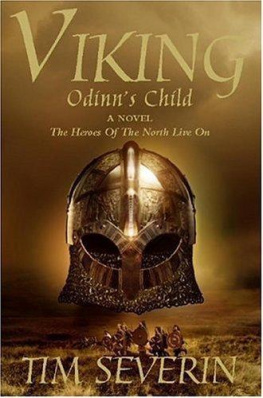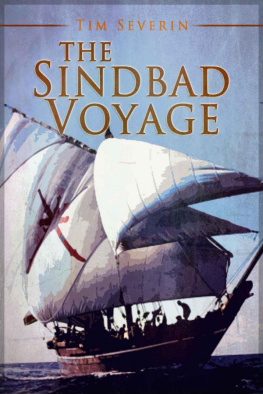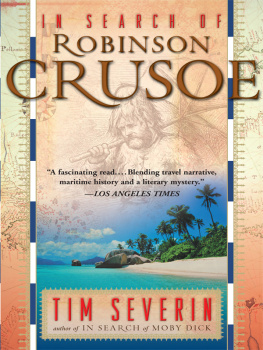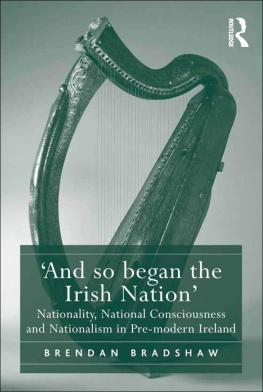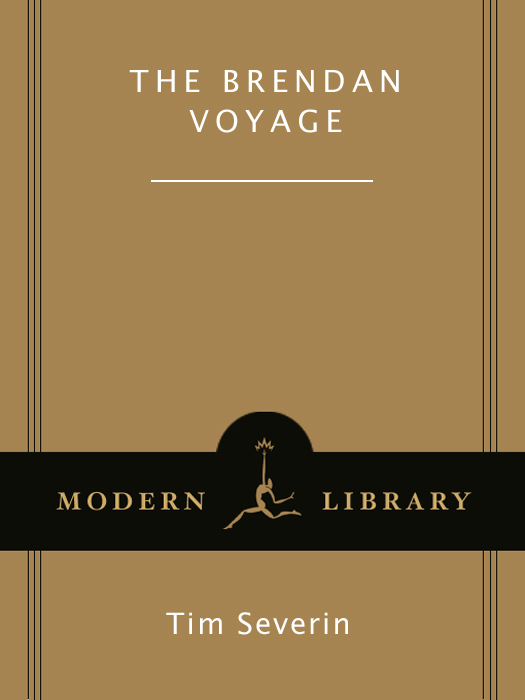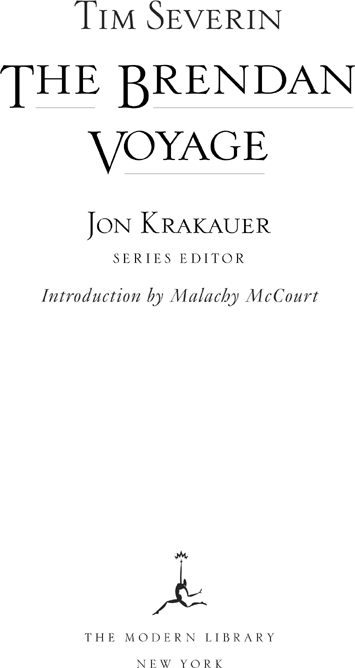ALSO IN THE MODERN LIBRARY EXPLORATION SERIES
Farthest North
by Fridtjof Nansen
La Salle and the Discovery of the Great West
by Francis Parkman
The Last Place on Earth
by Roland Huntford
Starlight and Storm
by Gaston Rbuffat
Weird and Tragic Shores
by Chauncey Loomis
T IM S EVERIN
Tim Severin, explorer/traveller, author, filmmaker, and lecturer, made his first expedition by motorcycle along the route of Marco Polo while still a student at Oxford. In addition to sailing a leather boat across the Atlantic in the wake of St. Brendan the Navigator, he has captained an Arab sailing ship from Muscat to China to investigate the legends of Sinbad the Sailor; steered a replica of a Bronze Age galley to seek the landfalls of Jason and the Argonauts and of Ulysses; traveled on horseback with nomads of Mongolia in search of the heritage of Genghis Khan; sailed the Pacific on a bamboo raft to test the theory that ancient Chinese mariners could have reached the Americas; and retraced the journeys of Alfred Russell Wallace, Victorian pioneer naturalist, through the Spice Islands of Indonesia using a nineteenth-century prahu. His most recent quest, In Search of Moby Dick, seeks the great white whale of Melvilles famous novel among the islands of the Pacific.
For his many books, he has received the Thomas Cook Travel Book Award, The Book of the Sea Award, a Christopher Prize, and the literary medal of the Academie de la Marine. Additionally, Severin holds the Gold Medal of the Royal Geographical Society and the Livingstone Medal of the Royal Scottish Geographical Society. In 1996 he was conferred with the degree of Doctor of Letters, honoris causa, by Trinity College, Dublin.
I NTRODUCTION TO THE M ODERN L IBRARY E XPLORATION S ERIES
Jon Krakauer
Why should we be interested in the jottings of explorers and adventurers? This question was first posed to me twenty-four years ago by a skeptical dean of Hampshire College upon receipt of my proposal for a senior thesis with the dubious title Tombstones and the Mooses Tooth: Two Expeditions and Some Meandering Thoughts on Climbing Mountains. I couldnt really blame the guardians of the schools academic standards for thinking I was trying to bamboozle them, but in fact I wasnt. Hoping to convince Dean Turlington of my scholarly intent, I brandished an excerpt from The Adventurer, by Paul Zweig:
The oldest, most widespread stories in the world are adventure stories, about human heroes who venture into the myth-countries at the risk of their lives, and bring back tales of the world beyond men. It could be argued that the narrative art itself arose from the need to tell an adventure; that man risking his life in perilous encounters constitutes the original definition of what is worth talking about.
Zweigs eloquence carried the day, bumping me one step closer to a diploma. His words also do much to explain the profusion of titles about harrowing outdoor pursuits in bookstores these days. But even as the literature of adventure has lately enjoyed something of a popular revival, several classics of the genre have inexplicably remained out of print. The new Modern Library Exploration series is intended to rectify some of these oversights.
The first six books we have selected to launch the series span fifteen centuries of derring-do. All are gripping reads, but they also offer a fascinating look at the shifting rationales given by explorers over the ages in response to the inevitable question: Why on earth would anyone willingly subject himself to such unthinkable hazards and hardships?
In the sixth century, according to medieval texts, an Irish monk known as Saint Brendan the Navigator became the first European to reach North America. Legend has it that he sailed from Ireland to Newfoundland in a diminutive boat sewn from leather hidesa voyage of more than three thousand miles across some of the worlds deadliest seas, purportedly to serve God. The Brendan Voyage describes modern adventurer Tim Severins attempt to duplicate this incredible pilgrimage in 1976, in an exact replica of Saint Brendans ancient oxhide vesselprofessedly to demonstrate that the monks journey was not apocryphal.
La Salle and the Discovery of the Great West, by the incomparable prose stylist Francis Parkman, recounts the astonishing journeys of Robert Cavelier, Sieur de La Salle, as he crisscrossed the wilds of seventeenth-century America in hopes of discovering a navigable waterway to the Orient. La Salle did it, ostensibly at least, to claim new lands for King Louis XIV and to get rich. He succeeded on both countshis explorations of the Mississippi Basin delivered the vast Louisiana Territory into the control of the French crownbut at no small personal cost. In 1687, after spending twenty of his forty-three years in the hostile wilderness of the New World, La Salle was shot in the head by mutinous members of his own party, stripped naked, and left in the woods to be eaten by scavenging animals.
Weird and Tragic Shores, by Chauncey Loomis, is the story of Charles Francis Hall, a flamboyant Cincinnati businessman and self-styled explorer who, in 1871, endeavored to become the first person to reach the North Pole. Hall, Loomis tells us, was impelled by a sense of personal destiny and of religious and patriotic mission, and displayed energy, will power, and independence remarkable even in a nineteenth-century American. He got closer to the pole than any Westerner ever had, but perished en route under mysterious circumstances and was buried so far north of the magnetic pole that the needle of a compass put on his grave points southwest. In 1968 Loomis journeyed to this distant, frozen grave, exhumed the corpse, and performed an autopsy that cast macabre new light on how Hall came to grief.
Farthest North is a first-person narrative by the visionary Norse explorer Fridtjof Nansen, who in 1893 set sail from Norway for the North Pole with a crew of twelve in a wooden ship christened the Fram, hoping to succeed where Hall and so many others had failed. Nansens brilliant plan, derided as crazy by most of his peers, was to allow the Fram to become frozen into the treacherous pack ice of the Arctic Ocean, and then let prevailing currents carry the icebound ship north across the pole. Two years into the expedition, alas, and still more than four hundred miles from his objective, Nansen realized that the drifting ice was not going to take the Fram all the way to the pole. Unfazed, he departed from the ship with a single companion and provisions for one hundred days, determined to cover the remainder of the distance by dogsled and on skis, with no prospect of reuniting with the Fram for the return journey. The going was slow, perilous, and exhausting, but they got to within 261 statute miles of the pole before giving up and beginning a desperate, yearlong trudge back to civilization.
Unlike La Salle, Hall and Nansen couldnt plausibly defend their passions for exploration by claiming to do it for utilitarian ends. The North Pole was an exceedingly recondite goal, a geographical abstraction surrounded by an expanse of frozen sea that was of no apparent use to anybody. Hall and Nansen most often proffered what had by then become the justification de rigueur for jaunts to the ends of the earthalmighty sciencebut it didnt really wash.


